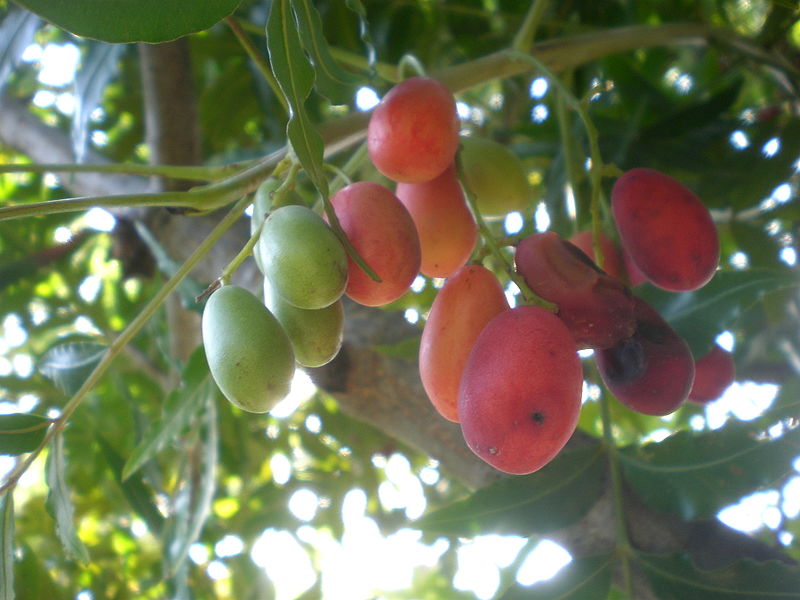Wild Plum Trees
Despite their common name and habit of producing edible fruit, wild plum trees (Harpephyllum caffrum) are not closely related to the plums trees that produce the fruit that fills the shelves of your local grocer (those plums belong to the genus Prunus). In fact, aside from these factors, wild plums (also called Kaffir plums) do not have much in common with their more well-known counterparts at all.
Geographic Range
Native to portions of southeastern Africa, wild plums are primarily restricted to low-lying coastal areas that have sufficient rainfall to support forests. They are particularly common in riparian habitats, which provide them with both the direct sunlight and moisture they need to thrive. They do not tolerate frost, so they are only found in areas that remain above 32 degrees year-round.
Basic Information and Description
The only members of their genus, wild plum trees can reach respectable sizes; the largest may approach or exceed 50 feet in height. Each of the tree’s pinnately compound leaves bears one terminal leaflet and eight to 16 lateral leaflets. Watery sap often leaks from places in which the leaves have been broken or cut. This helps to distinguish wild plums from Cape ash trees (Ekebergiacapensis), which they strongly resemble.
Wild plums are dioecious trees, meaning that individual trees bear only male or female versions of the small, off-white flowers. Following insect-driven pollination, the female flowers develop into green fruit, which begin appearing by early- to mid-summer. By autumn, they ripen and turn red.
Most of their leaves are glossy and light- to emerald-green, although the trees often bear a few randomly scattered red leaflets. A thin waxy coating protects the evergreen leaves from water loss, allowing them to persist throughout the year. The leaves are generally positioned at the ends of the tree’s branches, which helps give the tree a thick, attractive crown.
Wild Plums: An Important Food Source
Many people living alongside wild plum trees relish the species’ slightly sour fruit. Wild plums are slightly smaller and more oval than American plums, but otherwise look relatively similar. They are eaten raw, made into jams and fermented to make wild plum wine.
Wild plum fruit are also an important food sources for many different wildlife species that share their range. Mammals are especially important wild plum consumers. Fruit bats rely heavily on the fruit and serve as important seed dispersers for the trees, as are bush pigs and bush babies. Several birds also relish the species’ fruit, including trumpeter hornbills and purple-crested turacos.
Additionally, the larvae of at least eight different butterfly and moth species feed upon the leaves of wild plums, and birds use the hollow trunks of plum trees as roosting sites.
Cultivation and Commercial Use
Wild plums are popular ornamentals that are grown in private and public areas throughout much of South Africa. Most are grown from seeds, but others are the product of cuttings. Once established, wild plum trees are very low-maintenance ornamentals, which usually thrive if planted in U.S.D.A. Hardiness Zones 10 through 11.
Several native cultures have used the bark of the tree medicinally throughout history. The pale, red wood of wild plums is attractive, but it is very heavy and not particularly durable. Accordingly, it is primarily used in low-impact applications, such as furniture and other interior goods.











